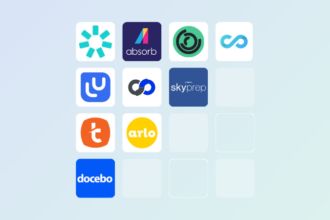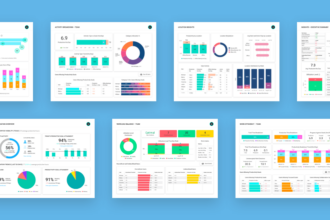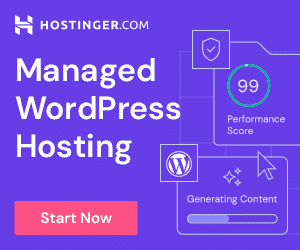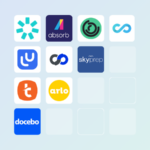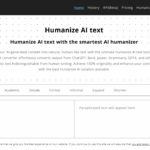In this article, I will discuss the Best Tools For Cross-posting Content, which can be useful for businesses and creators in saving time and maintaining presence on social media.
Scheduling, managing, and publishing content on multiple social media pages simultaneously has proved to be useful when it comes to efficiency and engagement.
Regardless of whether it is a small business or a full-blown marketing team, efficient content management is possible with the right tool.
What is Cross-posting Content?
Cross-posting content means distributing or sharing the same content on different platforms or social media channels. In place of crafting individual posts for separate social media channels, users tailor the content to suit specific channels, thereby enhancing content dissemination.
his technique aids in preserving time, optimizing visibility, and maintaining brand uniformity. “Although, these benefits come at a cost, and it may lead to reduced engagement because the content is not tailored for the specific platform, such as size, user demographics, and so on”.”
Why is cross-posting Content important?
Increases Reach: Sharing content on cross multiple platforms will definitely increase the audience.
Saves Time and Effort: Cross posting content saves time and effort by employing the original content tangible on the other platforms.
Maintains Branding: Keeps the same approach and brand message on all avenues.
Improves Engagement: Providing content on different locations increases the chances of engagement such as likes, comments, and shares.
Improves SEO and Visibility: Increase exposure and it will positively affect the search engine ranking and overall web presence.
Key point & Best Tools For Cross-posting Content list
| Tool | Key Point |
|---|---|
| Publer | Schedule posts across multiple platforms with bulk scheduling and analytics. |
| SocialBee | Content categorization, automation, and growth-focused posting. |
| Metricool | Real-time analytics, scheduling, and competitor tracking. |
| Buffer | Easy scheduling, engagement analysis, and multi-account management. |
| Later | Visual content planning for Instagram, TikTok, and Pinterest. |
| Hootsuite | Comprehensive platform for scheduling, monitoring, and team collaboration. |
| SocialPilot | Bulk posting, analytics, and client management for agencies. |
| Loomly | Content calendar, post creation guidance, analytics, and collaboration. |
| Sendible | Schedule posts, monitor engagement, and track brand mentions for clients. |
| Planable | Collaborative content approval and visual scheduling workflow. |
1. Publer
Publer ranks among the best for cross-posting, hands down. The service cross-posts content on different social media platforms in a breeze, like it is magic; Facebook, Instagram, LinkedIn, and Twitter, and even more are a walk in the park.
The soft is so easy to use, users can bulk create, edit, and schedule posts which gives more time for other strategic advancements or operations and is super time-friendly.
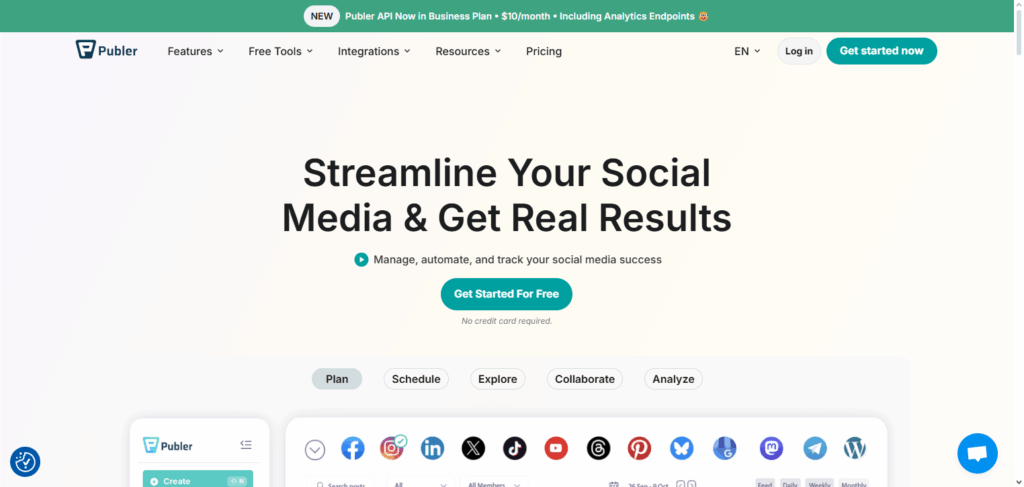
Unique features like automatic link shortening, a visual content calendar, and refined analytics ease the burden of campaign management.
If a business and or creator is active on multiple platforms and needs to cross-post content, without any of the hassle associated with use of multiple platforms, Publer is the best application.
Pros & Cons Publer
Pros:
- Automated scheduling with Facebook, Instagram, Twitter, LinkedIn, and TikTok.
- Bulk scheduling available by CSV file upload.
- Reasonably priced with valuable automation.
Cons:
- Competition offers better analytics.
- Free version limits the number of accounts.
- Advanced features locked to higher plans.
2. SocialBee
SocialBee is certainly among the best platforms for cross posting because of its robust automation and clever content categorization.
Users can split posts into categories—like promotions and tips or evergreen content—and set them up for automatic distribution on multiple platforms, including Facebook, Instagram, LinkedIn, and Twitter.
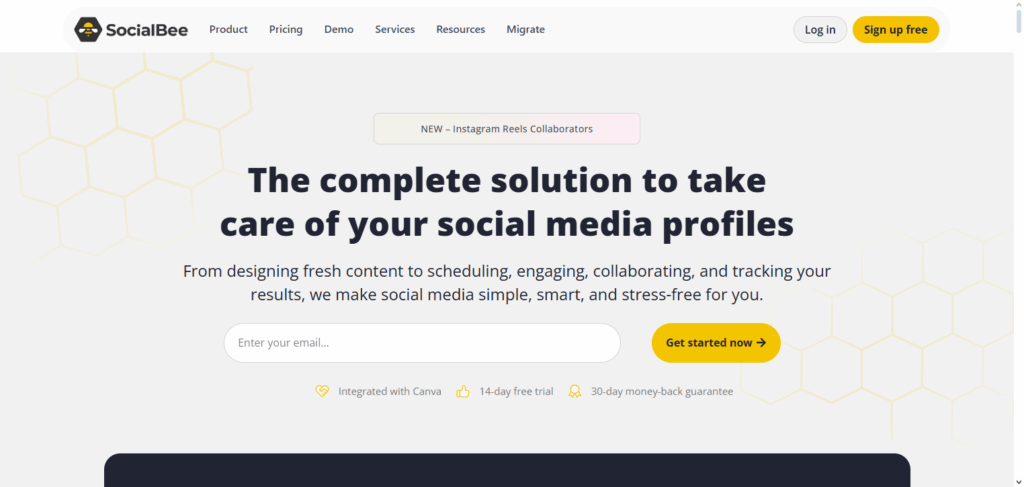
One of the most impressive features of SocialBee is its ability to automate the redistribution of content performance which gets repeated shared hand-free.
SocialBee also has audience targeting, analytics and collaboration features, which makes it perfect for agencies and businesses who wish to save time, streamline their social media strategy, and achieve a flawless consistent online presence.
Pros & Cons SocialBee
Pros:
- Superb content categorization to recycle evergreen posts.
- Outstanding support and client education.
- Integrates with numerous social media platforms.
Cons:
- Can be complex for new users.
- Higher cost than basic scheduling tools.
- Features available on the mobile app are basic.
3. Metricool
Metricool stands out among cross-posting tools because it combines scheduling content across Instagram, Facebook, Twitter, LinkedIn, TikTok, and many other platforms with advanced performance analytics.
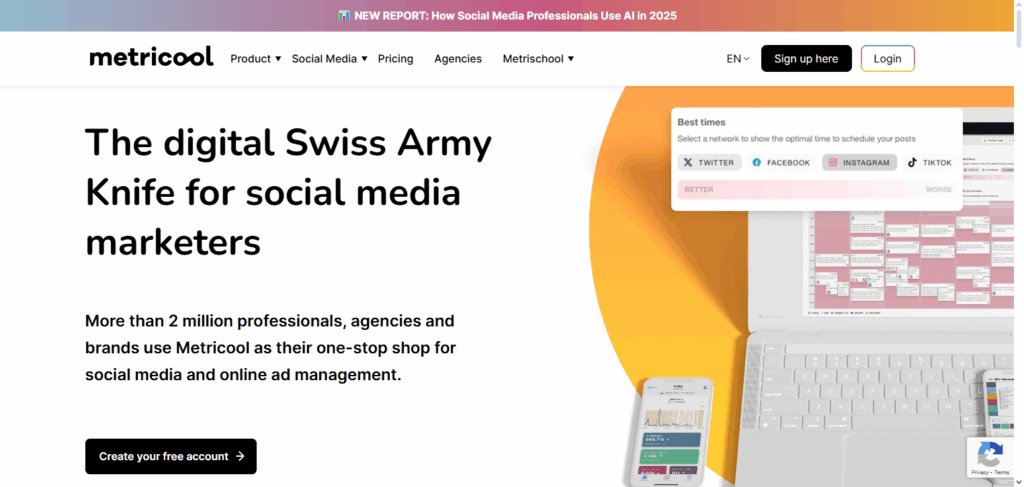
Its differentiator is the ability to monitor competitors and assess audience engagement in real-time, which allows users to optimize their posting strategy. Also, automated posting, performance report visuals, and thorough analytics simplify the effort to maintain cross-channel consistency.
For agencies, influencers, and businesses, the intelligent mix of posting scheduling, audience analytics, and competition insights accuracy provided analytics ensures that each post is published to maximize audience visibility and engagement.
Pros & Cons Metricool
Pros:
- In-depth analytics and performance tracking.
- Social media, blogs, and ads all in one tool.
- Calendar view helps with organization.
Cons:
- Advanced features locked to higher plans.
- Less automation than other apps.
- Technical problems result in posts missing their target time.
4. Buffer
Buffer is one of the best tools for cross-posting content, making it easy to schedule posts for social media channels like Facebook, Instagram, Twitter, LinkedIn, and Pinterest.
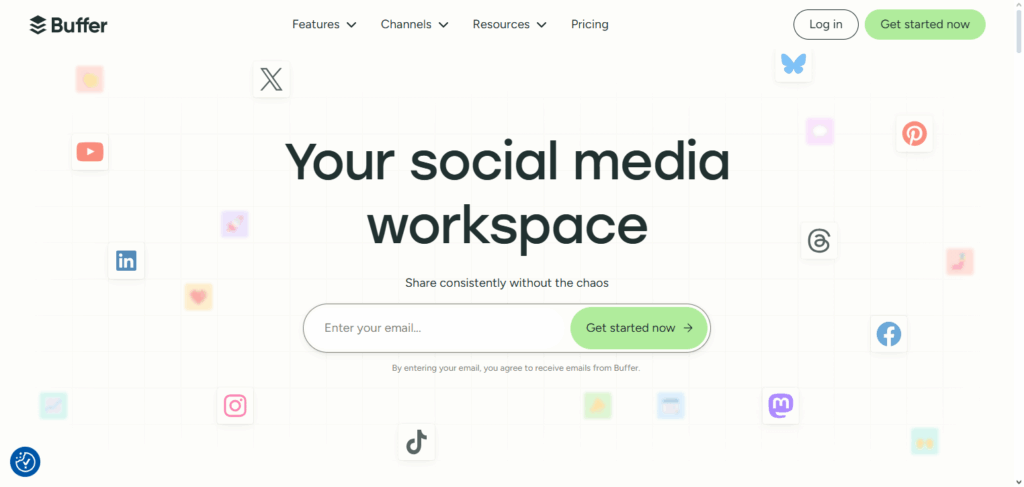
Its primary strength is in the user-friendly interface that helps users cleanly and seamlessly plan, queue, and publish content in bulk, all without losing the brand’s voice. Buffer is a social media post planner with a fantastic scheduler.
Its engagement analytics tools are sophisticated and tell users in detail how the audience interacts with their posts. Teamed and corporate users find Buffers’s collaborative automation and dependable performance features very useful in harmonizing the social media campaigns and cross-posting.
Pros & Cons Buffer
Pros:
- Simple and well designed for new users.
- Automated scheduling with several social platforms.
- Reasonably priced and clear pricing options.
Cons:
- Keeping a track of accounts is basic functionality unless you pay extra.
- Posting for Instagram and TikTok is quite limited.
- No content creation is possible within the platform.
5. Later
Later is one of the best tools for cross-posting content, especially for Instagram, TikTok, Pinterest, and Facebook, because of its unique, visual-first style.
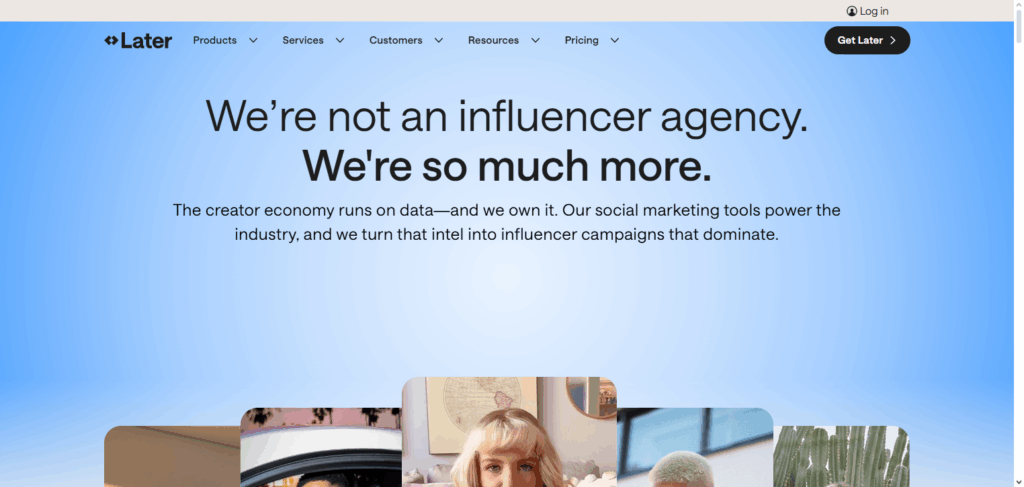
One of the best things about Later is the drag-and-drop content calendar which enables users to organize and visualize a complete and beautiful feed. Later enables bulk scheduling, automatic posting, performance analytics, and other engagement optimization features.
The content creation and distribution arms are streamlined using the media library manager and hashtag suggester. Businesses and creators aiming at visual media platforms will find Later effective and insightful for posting across multiple channels.
Pros & Cons Later
Pros:
- Great Instagram content calendar.
- Allows users to preview the feed before it’s published.
- Supports Instagram linkin.bio.
Cons:
- Free plan is not very useful.
- Focused primarily on Instagram/Pinterest.
- Limited functionality reports unless upgraded.
6. Hootsuite
Hootsuite is one of the best tools for cross-posting content across several social media networks, including Facebook, Instagram, LinkedIn, Twitter, and YouTube, because of its robust scheduling, powerful monitoring, and analytics features.
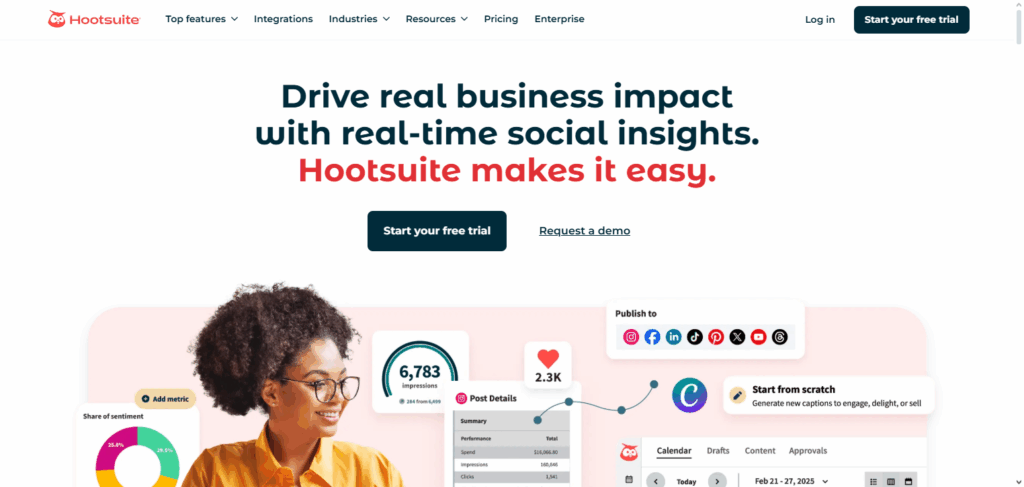
Central to its unique value proposition is the all-in-one dashboard which enables the user to perform work such as managing accounts, monitoring mentions, and interactions all from one user interface. Hootsuite also performs bulk scheduling, enables team work, and custom reporting, which is beneficial for business and agencies.
Hootsuite helps business maintain branding by ensuring that the content planning, publishing, and engagement tracking process is streamlined. This increases business efficiency and helps audience interaction which makes cross-posting more strategic and effective.
Pros & Cons Hootsuite
Pros:
- Allows for collaboration across multiple social networks.
- Integrate auto-publishing and robust reporting.
- Great for scheduling and programmatic monitoring.
Cons:
- Higher than industry average cost for SMBs.
- Interface is jam packed.
- Reports heavy customer support request backlog.
7. SocialPilot
SocialPilot is a great tool focused on cross-posting content and reducing the burden on professionals, businesses, and agencies on social media handling. It automatically schedules and posts on multiple social media handles, including Facebook, Instagram, LinkedIn, Twitter, and Pinterest.
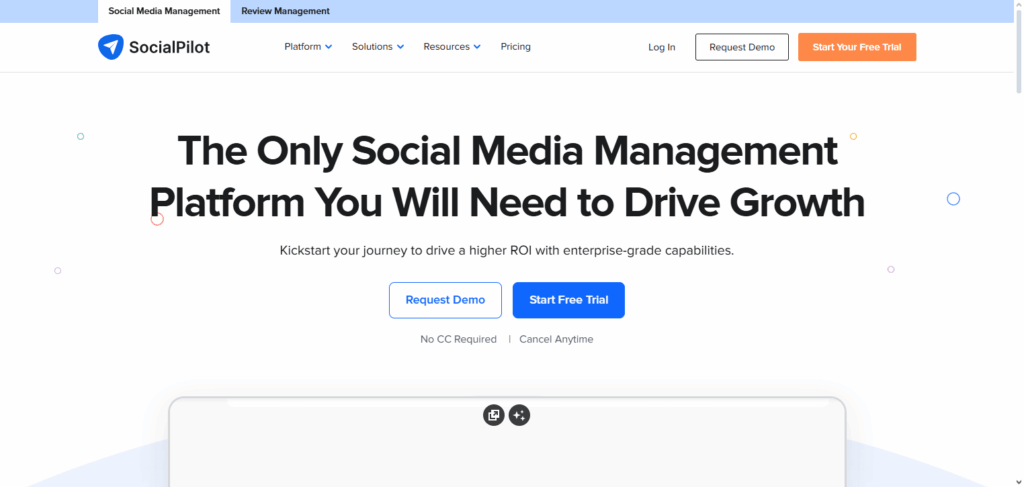
It also bulk schedules posts and handles multiple accounts at a time. It simplifies client management as well. Additionally, users can monitor the content performance and refine strategies using the improved content suggestions, detailed analytics, and other collaborative features.
Though sharable, the content itself optimizes social media performance. Thus, SocialPilot is fantastic for cross-posting content and social media campaigns.
Pros & Cons SocialPilot
Pros:
- Bulk scheduling and multiple accounts for a low price.
- Easy to use for for beginner users.
Cons:
- Basic social media analytics.
- Basic social media automation.
- Limited app functionality.
8. Loomly
Loomly is great for managing scheduling, creating content, and collaborating all in one place. Users can reap the benefits of its AI-driven scheduler to gain optimal post engagement and aid users in the selection of the perfect hashtags and even content suggestions.
This optimization is none other than the post creation guidance that is unique and aids users in maximizing engagement.
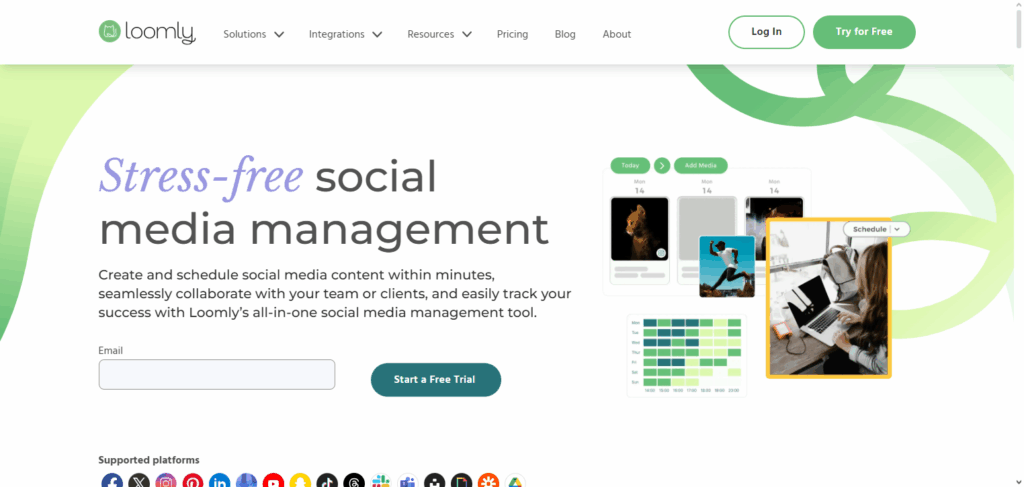
Users can manage a calendar of shared content and its analytics, which allows users to control their team’s pieces closely while also monitoring performance.
For all users, agencies, and brands looking to manage and post content flawlessly while providing insights across all platforms, Loomly is ideal for ensuring seamless sharing across major platforms.
Pros & Cons Loomly
Pros:
- Great post calendar for new team members.
- Great for putting content calendars in order.
- Content inspiration is very helpful.
Cons:
- Relatively higher in price for smaller groups.
- Compared to Hootsuite, the analytics are limited.
- Some users may find the UI a bit too cluttered at first.
9. Sendible
Sendible is among the best tools for post cross-publishing and schedulers due to its comprehensive Facebook, Instagram, Twitter, LinkedIn, and YouTube scheduling, monitoring, and analytics capabilities.
Sendible’s singular strength is its centralized dashboard, which allows users to handle multiple client accounts efficiently, respond to and manage brand messages and mentions, and brand monitoring from a single dashboard.
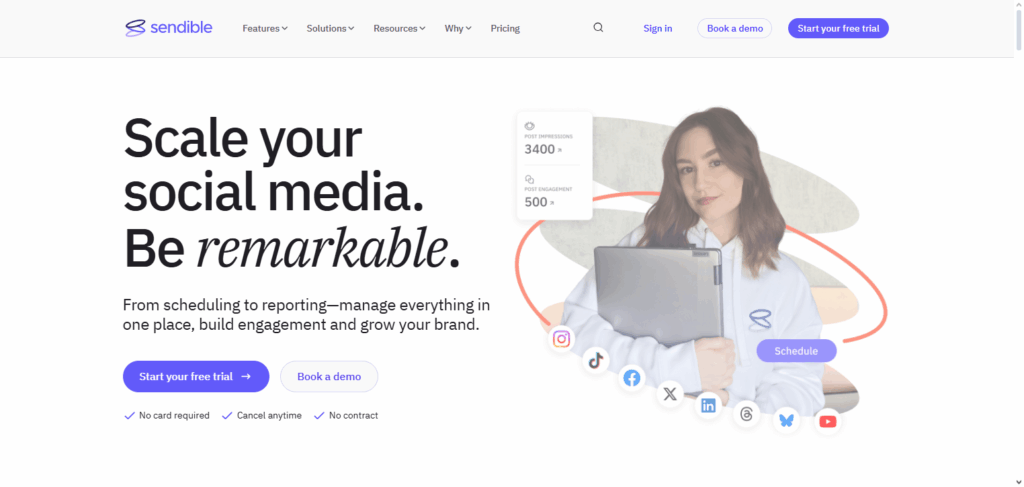
This centralized dashboard improves time efficiency and productivity. Sendible’s customizable reports, content automation features, social media campaign tools, and suggestion features improve the user’s social media campaign automation.
Agencies, businesses, and creators all benefit from Sendible’s seamless scheduling and posting reports, audience engagement tools, and cross-posting analytics. This makes Sendible’s cross posting features exceptional.
Pros & Cons Sendible
Pros:
- Great client management features for agencies.
- Supports scheduling of multiple platforms.
- Provides automation, and content suggestion tools.
Cons:
- Costs a lot for solo users.
- Incomplete integrations.
- Beginners may find it hard to learn how to use it.
10. Planable
Planable is one of the best tools for cross-posting content. It is very helpful in collaborative planning and visual content management. Users can design, check, and approve submissions for various sites like Facebook, Instagram, LinkedIn, Twitter, and TikTok.
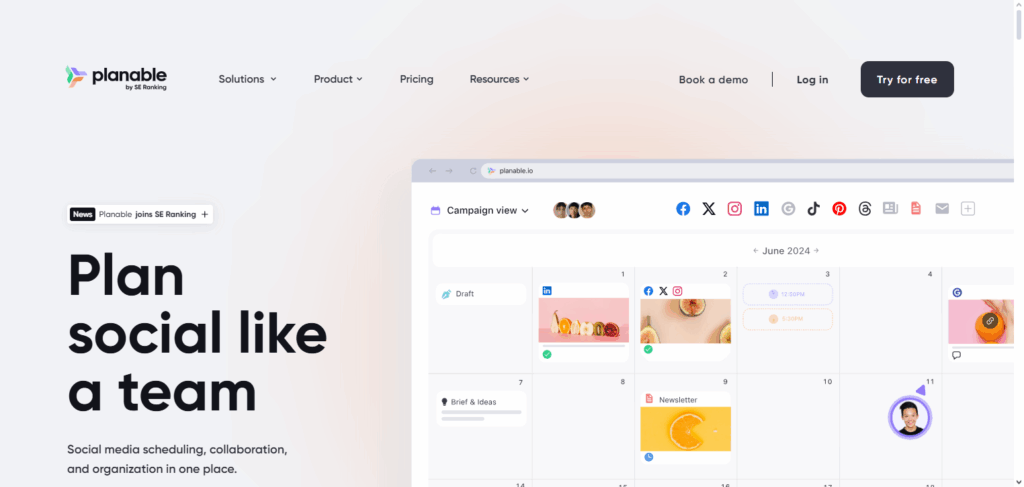
It promotes publishing without mistakes. In real-time collaboration, team members can add comments, make suggestions, and approve content before it goes live. They track, analyze, and arrange data using Planable’s visual calendar.
Drag-and-drop functionality allows easy scheduling. For brands and agencies focused on team-driven social media solutions, Planable provides support. It is one of the best tools for cross-posting that is available.
Pros & Cons Planable
Pros:
- Great for collaboration with simple approval processes.
- Visually appealing content calendar helps with planning.
- Works with multiple social platforms.
Cons:
- Weak analytic features.
- Overpriced for larger teams.
- Less automation capabilities than others in the market.
Benefits Of Tools For Cross-posting Content
Time Efficiency: Automating processes presents opportunities for greater productivity by saving hours of manual work.
Consistent Branding: No matter the social media channels, the business voice, style and message are the same.
Increased Reach: Users can disseminate the content on various channels to capture a larger and more diverse audience.
Better Analytics: Measure and compare cross-analysis clicks, timestamped engagements, and average time spent on every individual post from one window.
Improved Engagement: Consistent and scheduled postings helps to sustain the audience attention which encourages more interactions.
Content Repurposing: Since a single piece of content can be easily modified and used on different platforms, no one starts from scratch.
Reduced Errors: Decreases the likelihood of errors or omissions in content that is manually posted.
Conclusion
To sum up, the right tools for cross-posting content for businesses, content creators, and agencies are critical to keep a productive and coherent presence on social media.
Publer, SocialBee, Buffer, Later, Hootsuite, SocialPilot, Loomly, Sendible, and Planable offer tools for scheduling, engagement, and analytics. Every tool provides solutions for managing visual content, teamwork, and automating processes to enhance productivity.
Saving time and maximizing reach is critical. Select the right tool to streamline content management, boost audience engagement, and enhance social media productivity.
FAQ
Which platforms do these tools support?
Most tools support major platforms like Facebook, Instagram, Twitter, LinkedIn, Pinterest, TikTok, and YouTube, depending on the tool.
Are these tools suitable for teams?
Yes, many tools like Hootsuite, Loomly, and Planable offer team collaboration features, content approval workflows, and analytics for multiple users.
Can I schedule posts in advance?
Absolutely. All major cross-posting tools, including Buffer, SocialBee, and Publer, allow bulk scheduling for days, weeks, or even months ahead.
Do these tools provide analytics?
Yes, most cross-posting tools provide performance insights, engagement metrics, and reporting to optimize content strategy.
Are these tools suitable for agencies?
Yes, tools like Sendible, SocialPilot, and Planable are designed to manage multiple client accounts efficiently, with collaboration and reporting features.

